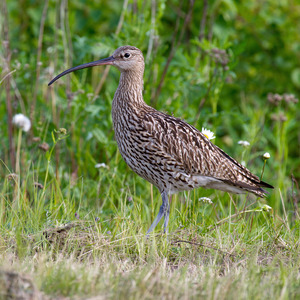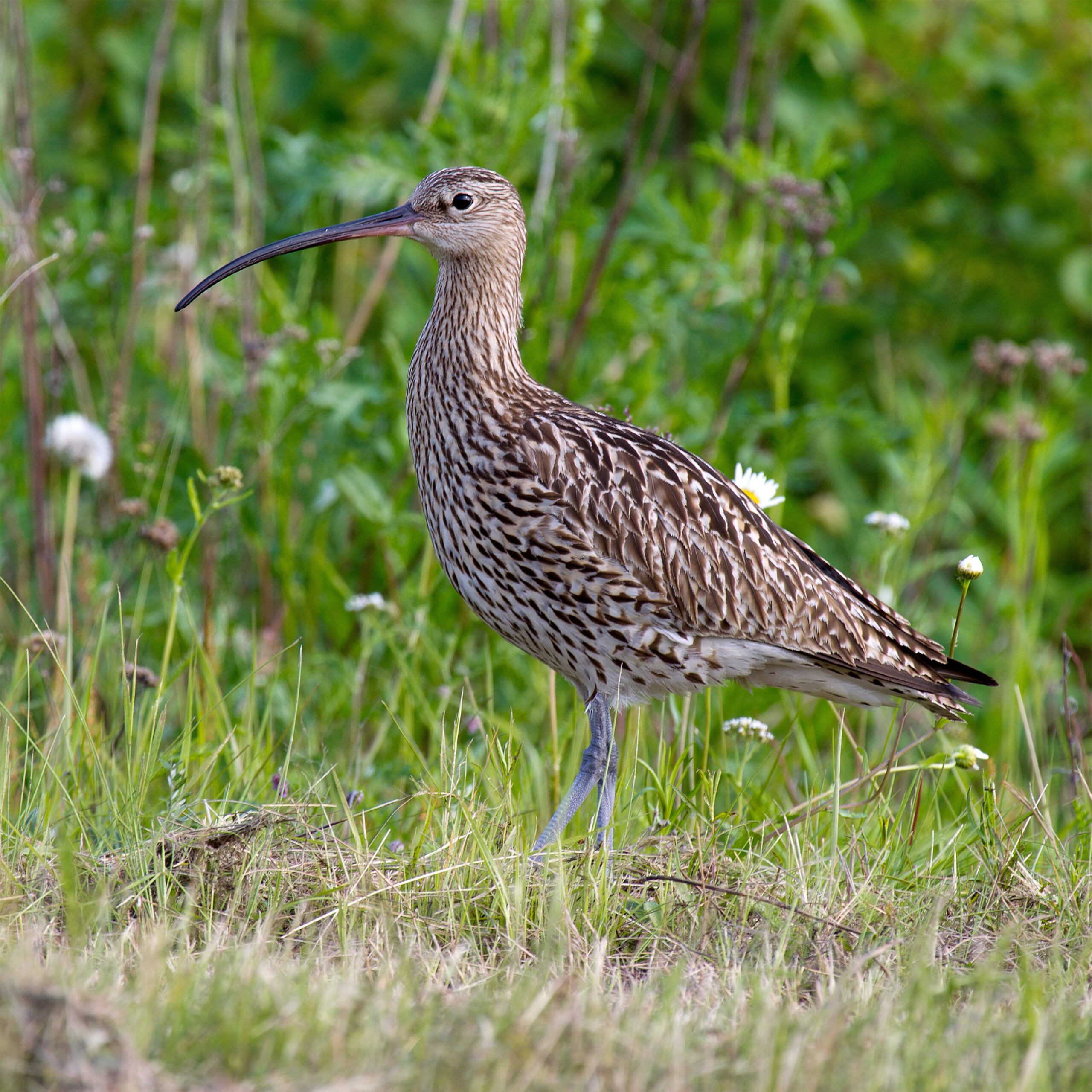 LINKED PAPER
LINKED PAPER
A synthesis of Eurasian Curlew (Numenius arquata arquata) demography and population viability to inform its management. Viana, D.S., Santoro, S., Soriguer, R.C. & Figuerola, J. 2023 Ibis. doi: 10.1111/ibi.13184 VIEW
The Eurasian Curlew (Numenius arquata) has undergone steep population declines in many regions of its European range and is globally classified as a Near Threatened species. The main cause for such declines is most likely related to low productivity levels resulting from habitat loss, disturbance, and predation in breeding grounds. Still, according to our own evaluation, survival was the most sensitive demographic parameter in determining population growth rates. Widespread hunting bans are already in place across Europe, which have contributed to keep survival at 90% across major European regions (according to our estimations using ringing-recovery data).
Demographic information collected in some European regions over past decades confirms the low productivity levels and the increasing trend in survival rates. But we asked whether the reported demographic rates were consistent with the population size trends estimated with population censuses. This is an important question, since we need representative demographic parameters to make population projections as accurately as possible and implement effective conservation measures at the flyway scale.
We compared the range of expected population growth rates obtained from reviewed demographic information (and calculated with a population matrix model) with the 30-49% decline in 31 years observed from population censuses in Europe (BirdLife International 2016), which according to a geometrical growth model corresponds to a negative population growth rate (l) of 0.978-0.988. The expected growth rate (according to demographic information) was 0.85 (range 0.62-1.03), which is much lower than the observed growth rate. We attribute this discrepancy to the fact that most demographic values come from regions where population declines are particularly steep, such as is the UK (42% to 54% in the last 23 years; Woodward et al. 2020).
To partly correct this sampling coverage bias, we also used our own estimations of standardised survival rates from major European regions (while using the same reviewed productivity values). The obtained population growth rates were higher (median 0.95; range 0.90 to 1.09) than with reviewed survival values, but still lower than observed growth rates. We suspect that other European regions, in particular northern regions including Russia, might show higher productivities that explain this inconsistency and compensate to some extent for the extremely low productivities in many of the sampled sites.
In an attempt to calculate the overall productivity levels at the flyway scale, we used the observed growth rates and our estimates of survival rate to reverse-estimate the average global productivity. It was estimated to range from 0.42 to 0.75 (adjusted normal distribution: mean 0.57, sd 0.07), which is on average 16% lower than that required to achieve a stable population size (0.68; Fig. 1).

Figure 1 Relationship between simulated population growth rates (λ) and productivity (p; number of fledglings per pair per year), when survival rates were allowed to vary within the range of our estimates. The large black dot indicates the needed productivity value to achieve a stable population size (λ = 1) and the line is the fitted exponential model (λ = 0.88 + 0.15 p0.68).
In our study, we strived to account for all the reported demographic variation in the population models and reported population growth rates. Still, we highlight the need to increase demographic data coverage to parameterise more reliable and complete population models that will allow more accurate population projections. Meanwhile, our estimates suggest that conservation efforts should strive to rise productivity levels to at least 0.68 individuals per nest per year at the European scale.
References
BirdLife International. 2016. Numenius arquata. The IUCN Red List of Threatened Species 2016: e.T22693190A90101437. Downloaded from https://doi.org/ 10.2305/IUCN.UK.2016-3.RLTS.T22693190A90101437.en (accessed 9 January 2017).
Woodward, I.D., Massimino, D., Hammond, M.J., Barber, L., Barimore, C., Harris, S.J., Leech, D.I., Noble, D.G., Walker, R.H., Baillie, S.R. & Robinson, R.A. 2020. BirdTrends 2020: Trends in Numbers, Breeding Success and Survival for UK Breeding Birds. BTO Research Report 732. Thetford: BTO.
Image credit
Top right: Numenius arquata © Andreas Trepte CC BY SA 2.5 Wikimedia Commons.
If you want to write about your research in #theBOUblog, then please see here.



